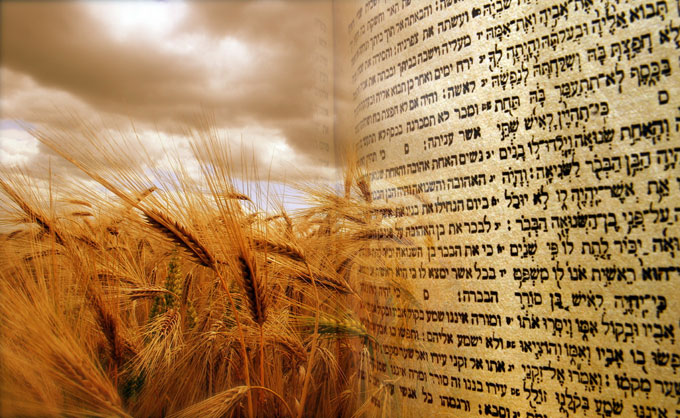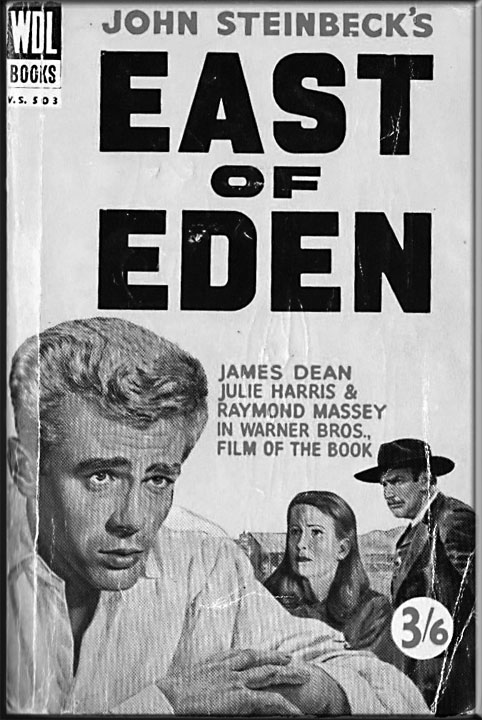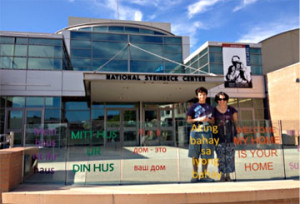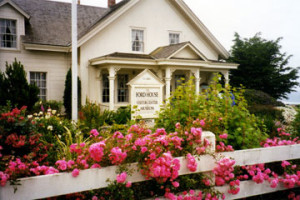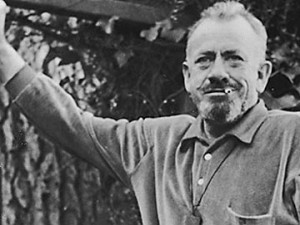The Jewish festival of Shavuot commemorates the Jewish people’s receipt of the Hebrew Bible and the ethical laws Torah contains. Though John Steinbeck wasn’t Jewish, the ethics of good and evil behavior, both within and outside ethical laws, are prominent in his writing beginning with The Grapes of Wrath, and the theme of Timshel—one’s response to evil—is a dominant feature of his partially autobiographical novel East of Eden. With that in mind, I recently took the opportunity to present a talk on Steinbeck’s treatment of Timshel in East of Eden to my local Jewish community as part of a program of Shavuot lectures in the Los Angeles area.
In my remarks I quoted passages from East of Eden (e.g., “the Hebrew word, the word Timshel—‘Thou mayest’— . . . gives a choice. It might be the most important word in the world. That says the way is open. That throws it right back on a man. For if ‘Thou mayest’—it is also true that ‘Thou mayest not’”) to explain Steinbeck’s fascination with the word Timshel in dramatizing the ethical choice we are given: whether to resist or succumb to the evil influences in our lives. I reviewed recent psychological research on how nature and nurture dictate our behaviors, as well as the Jewish teaching that emphasizes the responsibility of personal choice over good or evil, irrespective of nature, nurture, and perhaps even Divine influence. I also reflected on the intriguing typographical and transliteration mistake Steinbeck made in adapting the Hebrew word timshol to Timshel in East of Eden, along with Steinbeck’s influence on contemporary culture following this error.
My talk marked the conclusion to a remarkable personal East of Eden journey that brought with it a number of gratifying connections. As I noted in a previous post—“Discovering Unexpected Connections to East of Eden“—my adventure began with a visit to the National Steinbeck Center in Salinas, where I examined a replica of the hand-carved box Steinbeck made to convey the manuscript of East of Eden that he gave to his beloved editor and publisher, Pascal Covici. The ensuing research I carried out into apparent errors in the Hebrew carved on the box prompted enjoyable discourse with archivists, academics, rabbinical scholars, and other experts around the world. It led to a report on my findings in a paper published in the winter 2015 issue of Steinbeck Review, and to my presentation during the Jewish festival of Shavuot.
All in all, a fascinating series of experiences, as a consequence of a family vacation visit to the National Steinbeck Center that was, in turn, inspired by my reading of The Grapes of Wrath when I was growing up in the United Kingdom.
